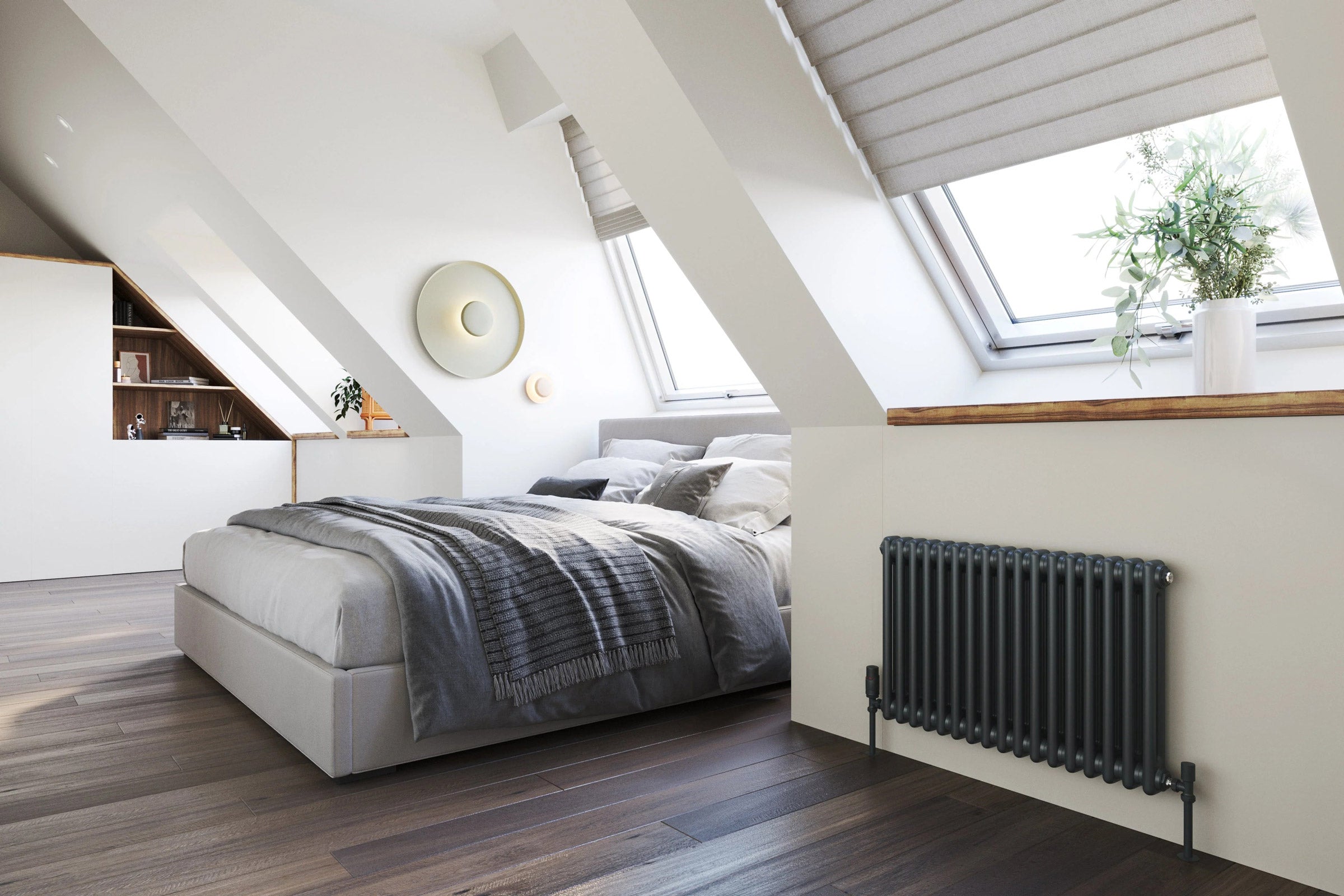
How to Choose a Radiator For Your New Home
How to choose a radiator, where to place it, and what type you should go for may all seem like daunting questions when there are so many options to choose from. We’ve come up with this handy guide on how to choose a radiator in the hope it makes the whole picture clearer, and your home will be a lot cosier, sooner rather than later!
Choosing the right type of radiator
The starting point is probably best to choose what type of radiator you would like. This may be influenced by your personal preference, or the limitations of your home.
Central heating radiators: This is the most common type of radiator found in our homes. Water heated by a boiler, heat pump or solar thermal heating system is sent through pipework to the radiators around your house. Central heating radiators are usually controlled by a central thermostat.
Electric radiators: Electric heating units are typically filled with a thermo-fluid warmed by a heating element that’s plugged or hardwired into your mains electricity supply. They can often be found in rooms where there is no plumbing, like in conservatories or loft conversions. They are usually controlled individually.
Dual fuel radiators: This type of radiator uses both gas and electricity to operate. Dual fuel radiators work like central heating radiators but also have an electric thermostatic heating element. This allows one radiator to be heated without turning the whole central heating system on.
Where should I install my radiator?
This is an important question as it will heavily influence the style of radiator you choose, as we will come on to next. You may not have much choice in the matter, as limited wall space will dictate where and where you cannot install a radiator.
Type of wall
The type of wall will also give you some clues as to the best size and style of radiator for your room. Solid masonry or brickwork walls will offer you the greatest choice, as larger radiators can be hung from strong solid walls with the right fixings and radiator accessories. Plasterboard walls with hollow spaces behind offer less options, as your radiator will need to be hung from the studs.
Counteract the cold
It’s best not to install your new radiator behind big pieces of furniture as you’ll stop heat from travelling around the room. Place it in the coldest part of the room, often near windows or external walls. This will counteract the cold air that enters the room.
Consider vertical over horizontal
If you’re short on horizontal wall space, vertical radiators can be an excellent solution. They’re tall and slim, making them perfect for narrow walls or rooms with limited space, such as hallways or bathrooms.
Room layout
The layout of your room will also influence the style and size of radiator you need. Larger rooms or rooms with open-plan layouts may require more than one radiator to ensure even heat distribution. Rooms with high ceilings may also need larger radiators to ensure the warm air circulates effectively.
Consider the size of the radiator
The size of your radiator will determine how efficiently it can heat the room. A small radiator will struggle to warm up a large room, while an oversized radiator may make the room feel too hot and uncomfortable. Calculating the radiators BTU rating will help you make a decision here.
The British Thermal Unit (BTU) rating is a key measure when choosing a radiator. It indicates the radiator’s heat output and tells you how much heat the radiator will produce.
This takes into account:
- room size
- insulation
- window size
- whether the room is north or south-facing
How to choose a radiator style
Next on the checklist of how to buy a radiator is to think about the style of radiator you want. This will largely depend on your personal style preference, and the space you have available as mentioned above.
Column radiators: Column radiators can come in horizontal and vertical designs. Rows of metal tubes join at the top and bottom in a traditional design.
Single or double panel radiators: Perhaps the most commonly used radiators for central heating systems. Single panel radiators sit close to the wall, whilst double panel radiators have a gap between them that helps give out more heat.
Bathroom radiators: Also known as towel rail radiators, bathroom radiators are designed for enhanced heating and energy efficiency, so you can heat up your towels and reduce your energy bills.
Designer radiators: Radiator collections made by designer brands offer more aesthetic appeal. Designer radiators offer heat and warmth in stylish designs that can be a central focus point in your room.
Choosing the right material
Radiators are made from various materials, each offering distinct advantages and disadvantages. When considering how to choose a radiator for your home, think about the material’s thermal efficiency, heating speed, and appearance.
Steel radiators: Steel offers excellent thermal conductivity and heat retention, making it the most commonly used material in radiators. They come in a wide range of designs and colours, making them a popular choice for all households.
Aluminium radiators: These are lightweight and heat up more quickly than steel, making them ideal if you need fast heating. It also cools down more quickly when the heating is switched off.
Cast iron radiators: Cast iron radiators have a classic and traditional appearance, making them a popular choice in period homes. They take longer to heat up but retain heat for a long time.
How to choose a radiator with UK Radiators
Choosing the right radiator for your new home involves balancing practicality with aesthetics. With the right choice, you can ensure that your home is warm, comfortable, and stylish for years to come.
Choosing a new radiator with UK Radiators is made easier as we can help you through this decision process. Together with our expertise and knowledge, and your design and functionality preferences, we will come up with the perfect solution for your home.
Get in touch with our friendly team by calling 0333 006 8227, or send a message to sales@ukradiators.com.









